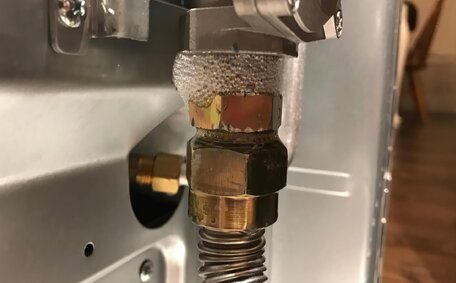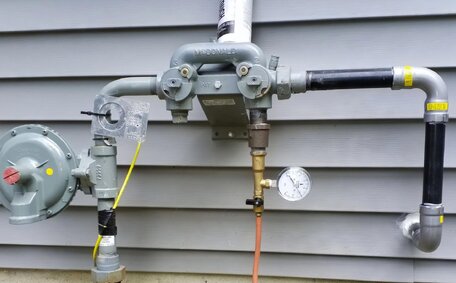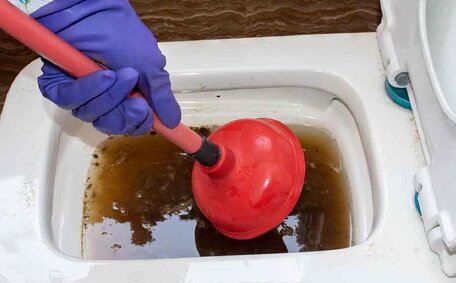Introduction to Hot Water System Efficiency
An electric hot water heater system option that churns out hot water effectively is key to reducing energy usage and costs in your home, ensuring you have enough hot water for your needs. Water heating accounts for a significant portion of household energy consumption, so improving efficiency delivers both environmental and financial benefits. This article tackles the most common queries, providing homeowners with insights that make you feel confident in recalibrating your hot water system to enhance performance and conserve energy.
Checking Power Supply and Resetting System
The first troubleshooting step is to ascertain whether there is power to your hot water system. Locate the power source, such as your electrical circuit breaker or safety switch, to check if there’s power and verify it is turned on. If it trips again quickly after a power outage, this can cause an electrical fault that requires professional attention.
If it is off, turn it on to restore power to the system.
You should also check for a reset button on your water heater, often found on an access panel or control interface. Press and hold this reset button for a few minutes to reset your system, then check if hot water can be felt at the tap.
Resetting the system can result in clearing out minor errors and get things working again without deeper intervention. Just be aware that a successful reset can help but doesn’t necessarily mean there are no underlying issues to still address.
With power and reset checks complete, if there is still no hot water, you will need to investigate further into specific calibration and efficiency improvements covered in the following sections.
Inspecting Key Components
To maintain efficiency, you’ll need to follow these steps: check and potentially replace key internal components in your hot water system periodically.
In an electric storage water heater, examine the upper heating element and lower thermostat. Ensure wiring is intact, the control knob fully turns smoothly and elements are free of mineral buildup. In an electric storage water heater, examine the upper heating element and lower thermostat.
For a gas hot water system, carefully inspect the pilot light assembly, thermocouple, burner tray, gas control valve and combustion chamber for obstructions or corrosion. You should check and relight the pilot flame, ensuring that it engulfs the thermocouple tip properly, so the heater can operate safely and efficiently.
The anode rod, which protects the metal tank from corrosion, requires replacement every 2-5 years in the Sydney region depending on water chemistry.
When accessing internal components, be sure to turn off the power supply and allow components to fully cool before you do attempt any repair work. Contact your local licensed plumber like us if you have any uncertainties servicing your water system.
Adjusting Thermostat Temperature Settings
Properly adjusting your hot water system’s thermostat is crucial; always check see that it aligns with efficiency and safety standards. Start by locating the thermostat, usually found on an access panel or control interface. Turn the dial to adjust the hot water temperature to around 50°C to save energy while still preventing dangerous Legionella bacteria growth.
Incrementally increase the water temperature setting to a level higher than before and check to see if the temperature of cold water coming out of taps is correct after 5-10 minutes. Stop when water reaches 60°C to avoid it being too hot, the optimal level to prevent Legionella while maximising efficiency. Take note if the thermostat fails to maintain a consistent temperature over time, indicating a faulty thermostat requiring replacement.
Lowering the thermostat on your hot water heater by 10°C can save around 5% on your energy bill for water heating. Just ensure temperatures aren’t set too low, never dropping below 50°C. For various types hot water heater systems, including solar and heat pump models, consult the section below how check for appropriate thermostat settings that help save money while maintaining safety.
Continuously monitor your hot water flow rate and temperature as well as your water usage for a few weeks after adjusting the thermostat. Small further tweaks to water can help stabilise temperatures. If efficiency fails to improve, unresolved issues can get your heater to require servicing or upgrading to a more advanced model - contact your local Kenthurst plumbing professional for advice.
Installing Insulation
Adding insulation around your hot water storage tank and pipes, even close to shower heads, can significantly reduce the amount of energy used, thus cutting your energy bills by improving the efficiency of your home’s water system. Insulation minimises standby heat losses and can reduce energy use, protecting the consistency of hot water system your house relies on.
Start by selecting an appropriate insulation material like fibreglass or foam sleeves designed for high temperature piping. Make sure to get a thickness of at least 19mm or greater. Carefully measure your tank and pipes to calculate the required insulation amounts before purchasing.
Installing insulation on pipes is relatively straightforward. Installing insulation on pipes is relatively straightforward.
Simply cut the insulation to length and seal the longitudinal slit closed after wrapping it around the pipe using foil tape. Insulating the tank is more difficult, so consider professional assistance unless you have working experience.
An uninsulated electric hot water tank has a volume more than capable of losing over 1300kWh per year in standby heat. By adding a 50mm exterior jacket, you can engage in energy saving, protect your hot water supply and reduce this to around 160kWh annually. Insulation offers a simplistic way to capture these wasted energy losses and noticeably improve system efficiency.
Performing Routine Maintenance
Regular maintenance ensures there’s enough hot water and is vital for prolonging your water system’s operational life while sustaining efficiency over time. Preventing your system from running out hot water can be less challenging when you follow the manufacturer’s advice for your hot water systems, but in general, aim to perform checks and simple tasks every 6 months.
Flush out sediment by connecting a hose to the drain valve and allowing the amount of water to flow through return water to go outdoors or to a sink.
Open the relief valve beforehand to ensure there’s enough hot water flow during drainage. Drain more than a full bucket of water, allowing new water to flush internal sediment. Check for leaks by inspecting pipes, valves, fittings and seals. Tighten fittings or replace worn gaskets as needed.
For gas systems, inspect burner operation and clear obstructions impairing airflow or gas flow. Carefully brush debris from the combustion chamber and vacuum out the area surrounding the burner. For gas systems, inspect burner operation and clear obstructions impairing airflow or gas flow.
Replace the anode rod every 2-5 years.
While complex repairs often require a professional, simple maintenance like flushing, leak checks and clearing basic obstructions can extend your hot water system’s efficient operational lifespan 5-10 years or more. But neglecting maintenance can do more than accelerate wear; it dramatically reduces efficiency over time.
Upgrading To More Efficient Systems
When an older hot water system fails to improve sufficiently through maintenance and recalibration, upgrading to a more advanced and efficient model is a smart long-term move. Hot water systems can modernise with heat pump water heaters that lead the field in energy efficiency, leveraging heat exchange technology to provide ample hot water while slashing power bills by up to 65%.
Heat pumps are energy efficient, utilising the natural heat in air or groundwater for heating water, rather than using direct heating like traditional electric resistance units. Their efficiency optimises your energy usage for water heating dramatically. While carrying higher upfront costs, electricity savings often offset the expense in under 5 years in warm Australian climates like Kenthurst, Sydney.
Alternatively, upgrading from a dated electric storage heater to a highly efficient natural gas water heating unit also boosts efficiency. Their continuous flow operation avoids standby heating losses characteristic of storage water heaters, ensuring the supply of hot water is more energy-efficient and the availability of heated water for your house can also improve without reheating a full tank.
Just ensure your gas line can support the greater energy load. Just ensure your gas line can support the greater energy load.
When upgrading any system, prioritise energy-efficient credentials like a high Energy Star rating. Compare running costs and flow rates between models rather than focusing solely on purchase price. Installation expertise is also key for sustaining efficiency and safety gains into the future.
Contact your local licensed plumber professional to review hot water system replacement options that supply hot water suiting your household needs and budget. An efficiency-driven upgrade gives your highest returns on investment over time while minimising environmental impact.
When To Call A Professional
Despite your best efforts recalibrating your hot water system, you may eventually reach the point where professional assistance is required. For water system assistance and plumber professional advice, call Kenthurst Plumbing on 1300 349 338 or email [email protected] in the following situations:
- If you have still no hot water despite troubleshooting efforts
- When the system fails to maintain stable temperatures after thermostat adjustments
- For complex parts replacement or upgrades beyond a homeowner’s DIY capacity
- If significant efficiency issues persist after servicing and insulation
- When installing pipe insulation around challenging tank configurations
- If unfamiliar with electrical wiring or gas fittings when accessing system components
- When its time to consider a complete replacement for an older system due to failing efficiency upgrades
- For selecting and installing new efficient systems like heat pumps or condensing models
Your plumber can troubleshoot any water system issues, recommend appropriate upgrades to enhance efficiency, and ensure optimal configuration for your household’s needs.
We take great pride in keeping our local community flowing with ample hot water while conserving energy usage. Contact our team today if you experience no hot water—call for system maintenance, repairs or upgrade options.






